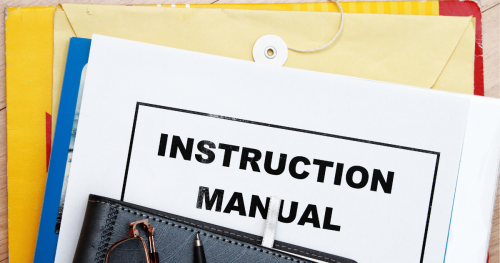 This is the eleventh article in a series analyzing the Unified Patent Court (“UPC”) and the provisions of the Agreement on a Unified Patent Court (“UPC Agreement”) of February 19, 2013 (the full text of the agreement is accessible here). It focuses on the provisions of the UPC Agreement dealing with the issue of competence of local, regional, and central divisions of the UPC (Articles 32 and 33 UPC Agreement).
This is the eleventh article in a series analyzing the Unified Patent Court (“UPC”) and the provisions of the Agreement on a Unified Patent Court (“UPC Agreement”) of February 19, 2013 (the full text of the agreement is accessible here). It focuses on the provisions of the UPC Agreement dealing with the issue of competence of local, regional, and central divisions of the UPC (Articles 32 and 33 UPC Agreement).
The new Unified Patent Court will comprise a court of first instance and a court of appeals. In addition, a patent mediation and arbitration center that will foster amicable settlements is planned. The court of first instance will have a decentralized structure with local or regional divisions in the Member States of the UPC Agreement and, for certain cases, a central division in Paris with a section in Munich.
The court of first instance will hear various types of actions that are listed in Article 32 of the UPC Agreement. In a nutshell, local and regional divisions primarily have competence for infringement actions (whether or not they involve invalidity counterclaims), while the central division primarily will deal with invalidity claims (whether or not they involve infringement counterclaims). It also shall oversee actions regarding declarations of non-infringement.
However, parties may agree to file any action in any division, including the central division, with only actions concerning decisions of the European Patent Office (“EPO”) related to tasks cited in Article 9 of Regulation (EU) No. 1257/2012 (see Article 33 para. 7 UPC Agreement) excluded.
Apart from the (quite simple) rule mentioned above, the competence of different divisions of the court of first instance is knotty.
To help companies answer the pivotal question of where to file a case, below is a brief outline of the provisions governing the competence of the various divisions (see Article 33 UPC Agreement):
| Article 33 UPC Agreement | concerning the following actions: | provides the following: | and also provides that: |
| Paragraph 1 | (i) actions for actual or threatened infringement of patents and supplementary protection certificates and related defenses, including counterclaims concerning licenses; (ii) actions for provisional and protective measures and injunctions; (iii) actions for damages or compensation derived from the provisional protection conferred by a published European patent application; (iv) actions relating to the use of the invention prior to the granting of the patent or to the right based on prior use of the invention; (v) actions seeking compensation for licenses on the basis of Article 8 of Regulation (EU) No. 1257/2012 |
1. the action shall be brought before the local division hosted by the Contracting Member State where the actual or threatened infringement has occurred or may occur, or the regional division in which that Contracting Member State participates; or 2. the action shall be brought before the local division hosted by the Contracting Member State where the defendant or, in the case of multiple defendants, one of the defendants has its residence, or principal place of business, or in the absence of residence or principal place of business, its place of business, or the regional division in which that Contracting Member State participates. An action may be brought against multiple defendants only when the defendants have a commercial relationship and the action relates to the same alleged infringement; 3. actions cited in point (v) shall only be brought before the local or regional division in accordance with point 2. above |
– actions against defendants having their residence, or principal place of business or, in the absence of residence or principal place of business, their place of business, outside the territory of the Contracting Member States shall be brought before the local or regional division hosted by the Contracting Member State where the actual or threatened infringement occurred or may occur or before the central division; – if the Contracting Member State concerned does not host a local division and does not participate in a regional division, actions shall be brought before the central division |
| Paragraph 2 | (vi) actions cited in points (i)-(v) above | 1. if the action is pending before a division of the court of first instance, any of these actions between the same parties regarding the same patent may not be brought before any other division | – if an action referred to in point (i) above is pending before a regional division and the infringement has occurred in the territories of three or more regional divisions, the regional division concerned shall, at the request of the defendant, refer the case to the central division; and – if an action between the same parties on the same patent is brought before several different divisions, the division first seized shall be competent for the whole case and any division seized later shall declare the action inadmissible |
| Paragraph 3 | (vii) counterclaims for revocation of patents and for declaration of invalidity of supplementary protection certificates |
1. these may be brought in the case of an action for infringement (see point (i) above) | – specifically, after hearing the parties, the local or regional division concerned shall at its discretion either: (a) proceed with both the action for infringement and the counterclaim for revocation; or (b) refer the counterclaim for revocation to the central division for a decision and suspend or proceed with the action for infringement; or (c) with the agreement of the parties, refer the case to the central division for a decision |
| Paragraph 4 | (viii) actions for declarations of non-infringement of patents and supplementary protection certificates; (ix) actions for revocation of patents and for declaration of invalidity of supplementary protection certificates |
1. shall be brought before the central division | – if an action referred to in point (i) above between the same parties relating to the same patent has been brought before a local or regional division, these actions may only be brought before the same local or regional division |
| Paragraph 5 | (x) actions cited in point (ix) above (actions for revocation of patents and for declaration of invalidity of supplementary protection certificates) | 1. if the action is pending before the central division, an action cited in point (i) between the same parties relating to the same patent may be brought before any division or before the central division | – specifically, after hearing the parties the local or regional division concerned shall at its discretion either: (a) proceed with both the action for infringement and with the counterclaim for revocation; or (b) refer the counterclaim for revocation to the central division for a decision and suspend or proceed with the action for infringement; or (c) with the agreement of the parties, refer the case to the central division for a decision |
| Paragraph 6 | (xi) actions referred to in point (viii) above (actions for declarations of non-infringement of patents and supplementary protection certificates) | 1. if the action is pending before the central division, it shall be stayed once an infringement action cited in point (i) above between the same parties or between the holder of an exclusive license and the party requesting a declaration of non-infringement relating to the same patent is brought before a local or regional division within three months of the date on which the action was initiated before the central division | N/A |
| Paragraph 9 | (xii) actions concerning decisions of the European Patent Office in carrying out the tasks cited in Article 9 of Regulation (EU) No. 1257/2012 | 1. shall be brought before the central division | N/A |
The EPO also plays a role in this tangled web. Filings seeking revocation of patents and declarations of the invalidity of supplementary protection certificates, as well as counterclaims for revocation of patents and declarations of invalidity of supplementary protection certificates, can be brought before the UPC with no need for the applicant to file notice of opposition with the EPO (see Article 33 para. 8 UPC Agreement).
Finally (and potentially to complicate things further), proceedings before the UPC may be suspended if there are pending revocation, limitation, or opposition proceedings or a request for accelerated processing before the EPO, at least when a decision may be expected from the EPO in a short time (Article 33 para. 10 UPC Agreement).


